Though I have been unlucky growing Liatris in my own garden (apparently, young plants are a rare delicacy, voraciously enjoyed by New England woodchucks), I have successfully placed Liatris spicata in many of my client’s gardens. It is my go-to plant for a planting plan that needs a little excitement and something to draw the eye up. Its flashy vertical spires (the horticulturalists among us might call them terminal spikes) of deep purple flower heads are an antidote to a mix that needs just that bit of jazz.
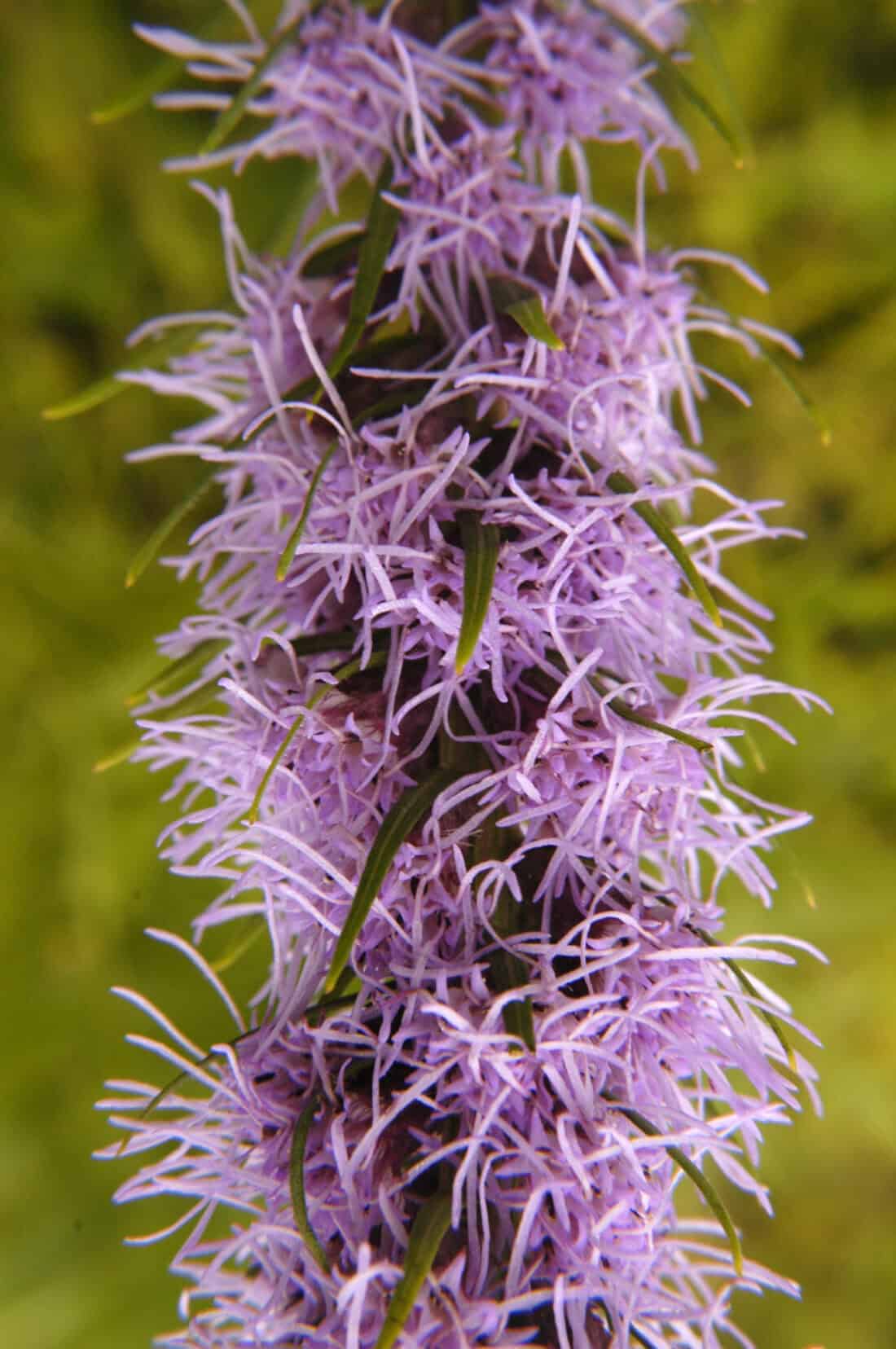
Why plant Liatris?
Liatris spicata, commonly known as dense blazing star or gayfeather, is a striking perennial that adds vertical interest and vibrant color to garden landscapes. These North American native plants are well-adapted to a variety of settings, thriving particularly in hardiness zones 3 through 8. Ideal for most temperate regions across the United States, Liatris spicata flourishes in prairies and open woodlands, making it a versatile choice for diverse garden designs.
The genus of Liatris is primarily native to Eastern North America and Canada (East of the Rocky Mountains) and is generally an easy clump-forming perennial plant. It is a terrific choice for people who aren’t going to dote on it.
The plant prefers full sun to partial shade and is quite tolerant of drought once established, making it suitable for xeriscaping.
It thrives in well-drained soils and does not do well in areas where the soil remains wet for extended periods (I have struggled with this in some of my richer new england soils). Sandy or rocky soils are ideal for Liatris spicata, as they ensure adequate drainage and mimic its natural habitat.
In terms of ecoregions, Liatris spicata is particularly well-suited to the Central and Eastern United States, where it can be used as part of prairie restorations or in naturalistic garden settings. Its tall, spiky flowers attract pollinators such as butterflies and bees, contributing to the ecological health of the garden.
Its vibrant purple spikes bloom in mid to late summer, attracting bees, butterflies, and hummingbirds, which makes it an excellent choice for gardeners looking to enhance biodiversity.
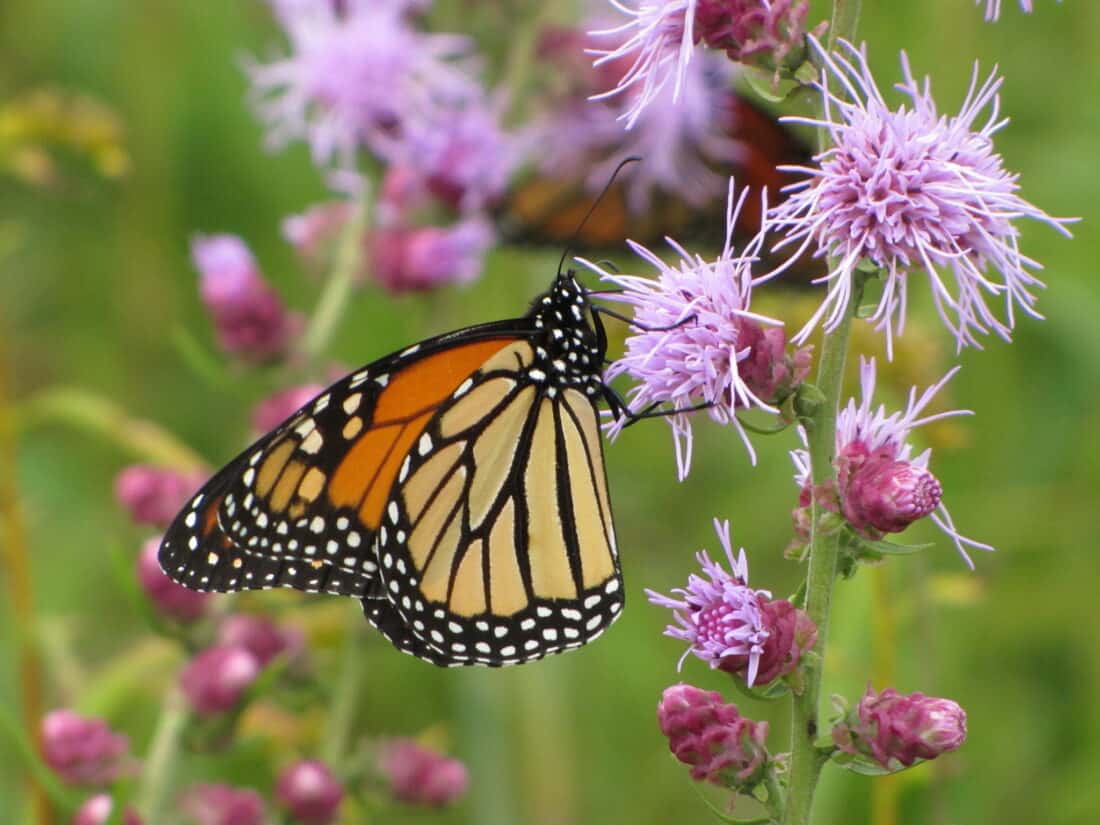
Liatris is a food source for Monarchs and other butterflies.
Image by aecole2010
Common Buckeye on Liatris
Image by John Flannery

The flowers of liatris persist to the late fall – providing ecosystem resources late into the growing season where other plants with nectar sources become less available. The are great for a perennial border that needs extending.
My recommendation is to group it together (at least 3 plants, maybe even 5 or 7) and create a series mini focal points. The tall spikes are great for cutting and the grassy foliage goes well in a modern prairie or cottage garden.
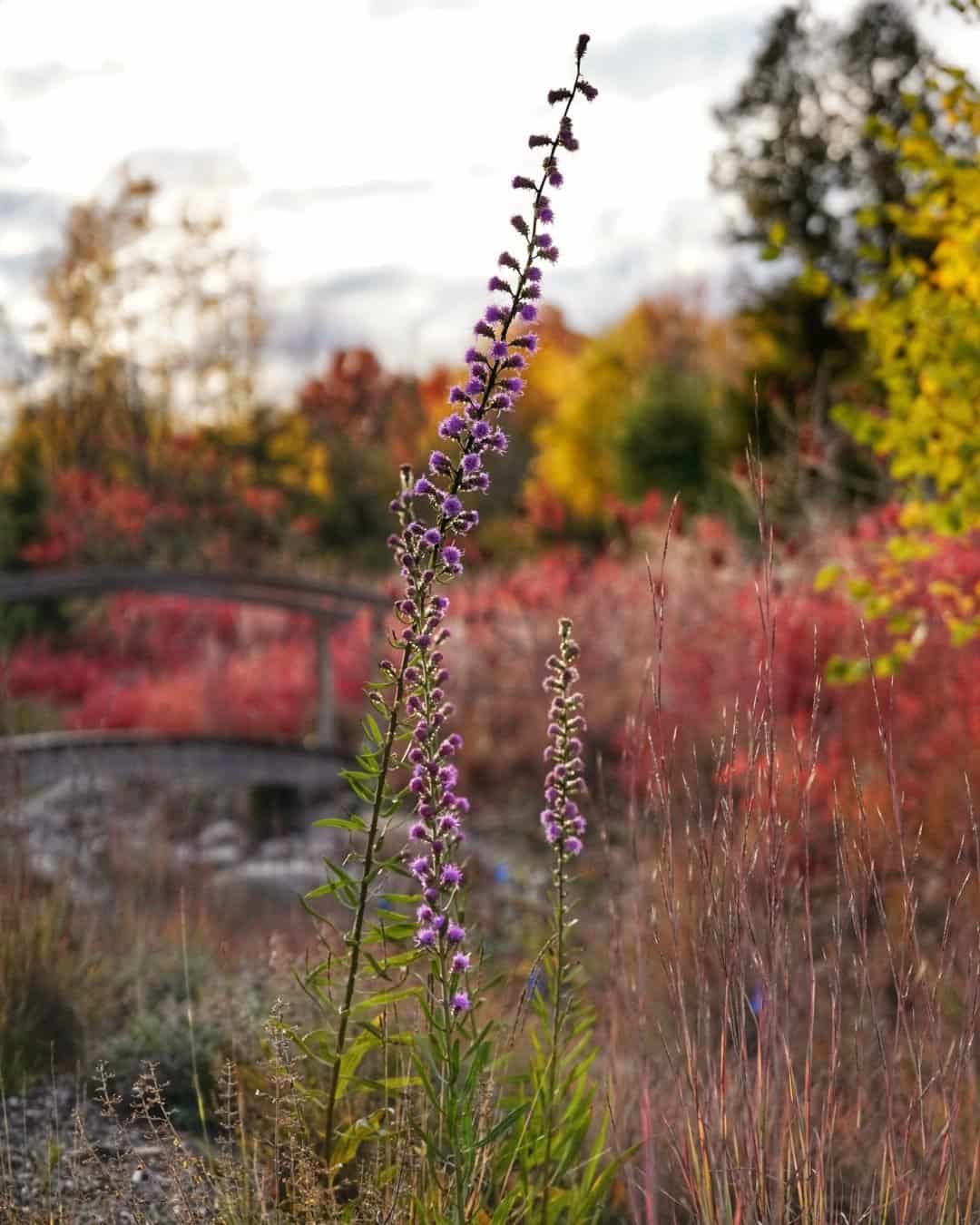
How to Plant and How To Grow Liatris
When planting Liatris , consider its potential height. Depending on the species of liatris it can be as tall as 4 or more feet. Space plants about 15 to 18 inches apart to allow for proper air circulation and light penetration, which helps minimize the risk of disease.
You can buy them as bare root plants – much like you might buy daylilies – or you can pay a bit more and get them potted with soil in the nursery. These plants will generally ship in the spring and you should plan to plant them immediately. You can expect plants and flowers the first year.
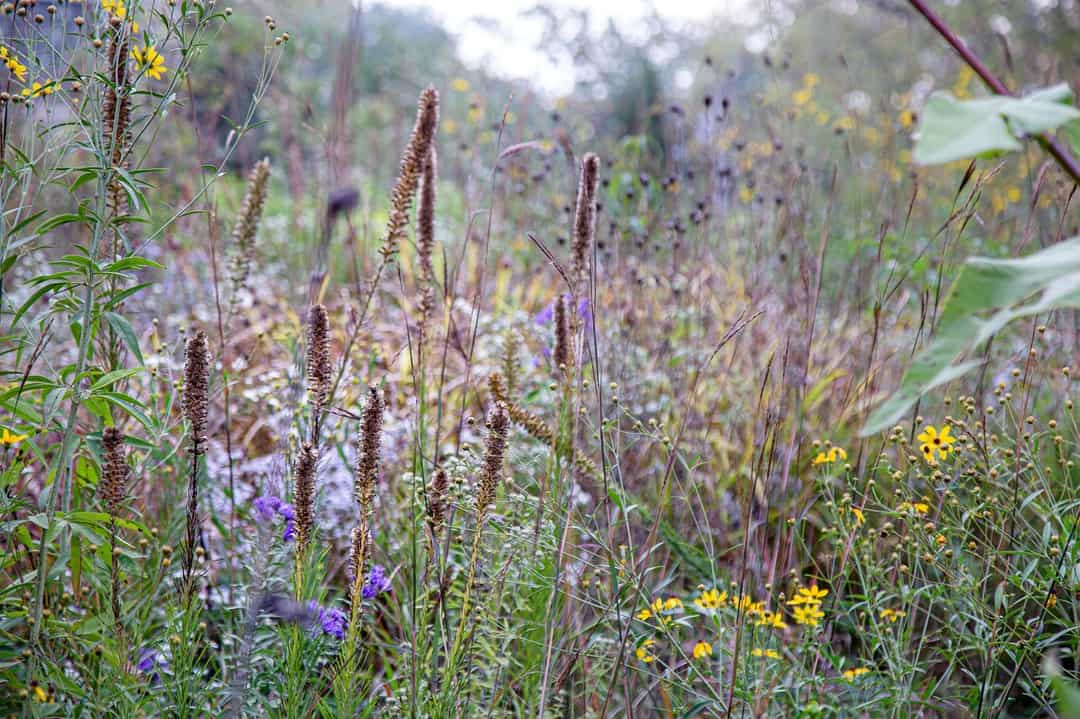
Liatris for a Rain Garden
Regarding its suitability for a rain garden, Liatris spicata is a good choice, though with some caveats. Rain gardens are designed to absorb runoff water, and typically require plants that can tolerate both wet and dry conditions.
Liatris spicata naturally grows in well-drained soils but can also handle periodic wetness, particularly if the soil drains well between watering events. This means it will be most suitable for the upper edges or the middle zones of a rain garden, where the soil tends to dry out faster than in the deepest parts where water collects. Liatris does not want wet soils.
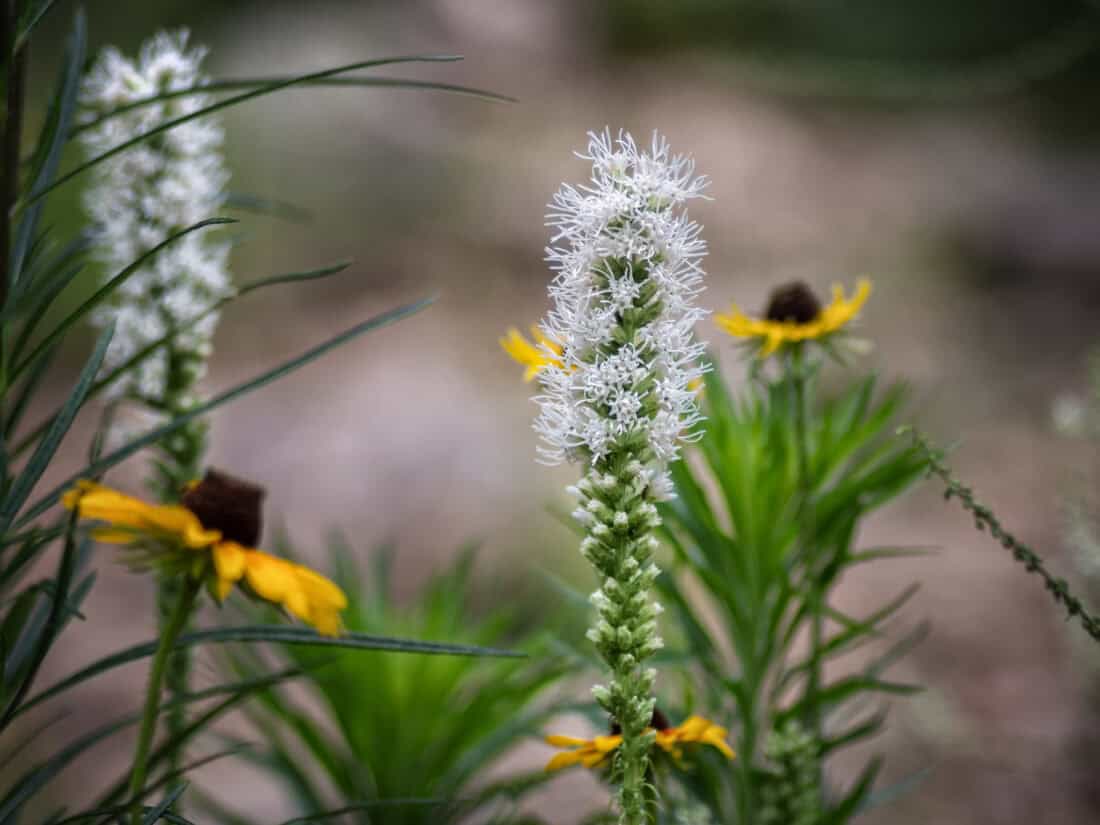
Varieties of Liatris – Common Name Prairie Gayfeather or Prairie Blazing Star.
Liatris spicata is a popular perennial plant known for its distinctive leafy flower stalks, flowering spikes, and ease of cultivation. It is a great to add to a native plant garden. Several varieties of Liatris offer a range of colors, sizes, and blooming characteristics. Here are some of the most popular varieties, including those with white flowers:
- Liatris spicata ‘Floristan Violet’ – This variety is known for its bright violet-purple flowers. It’s a robust grower, typically reaching about 2 to 4 feet in height. The ‘Floristan Violet’ blooms from early to mid-summer and is popular for its long-lasting flowers, making it a favorite in both gardens and cut floral arrangements.
- Liatris spicata ‘Kobold’ (also known as ‘Kobold Original’) – This is a more compact form of Liatris, which makes it particularly suitable for small gardens or as a front-of-border plant. It features dense spikes of deep purple flowers and tends to be shorter than other varieties, generally staying under 2 feet tall.
- Liatris spicata ‘Alba’ – This variety is one of the white-flowering types of Liatris. It produces beautiful, dense spikes of creamy white flowers. Just like its purple counterparts, it attracts a plethora of pollinators and provides a striking contrast in the garden when planted among other perennials with darker hues.
- Liatris spicata ‘Floristan White’ – Another popular white-flowering variety, ‘Floristan White’ offers the same upright, spiky appearance as the more common purple Liatris but with elegant white blooms. It’s perfect for creating a light, airy feel in the landscape or in floral arrangements.
- Liatris spicata ‘Trailblazer’ – Known for its unique foliage as well as its flowers, ‘Trailblazer’ features fine, bluish-green leaves that are more resistant to wilting in the sun. The purple flowers are typical of the species, offering a traditional Liatris look with improved foliage performance.
- Liatris aspera (common name Button or Rough Blazing Star) – This is native to tall grass prairies and thrives in these conditions (dry, poor, and sandy soil and full sun). It will, however, be ok if it is a part-shade situation. It is a late bloomer – later than most other of the species. This variety can get over 5 feet tall and has willow-like foliage that turns red in the fall.
All these varieties of Liatris spicata thrive in full sun and well-drained soil, making them excellent choices for adding vertical interest to perennial borders, wildflower meadows, or pollinator gardens. They are particularly effective when planted in masses and are known for their ability to adapt to a variety of garden settings, including rain gardens, as previously mentioned.
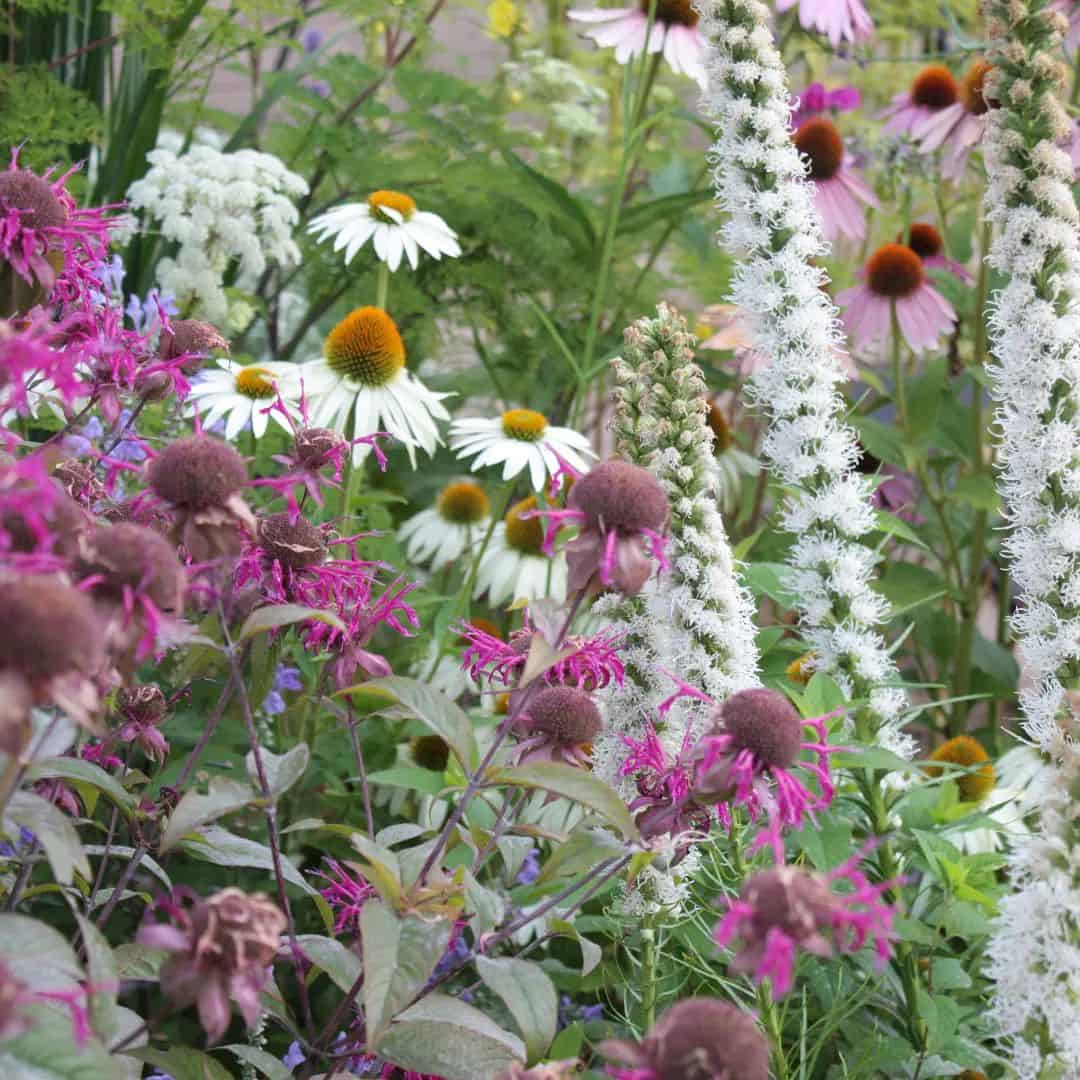
What to Plant with Liatris – Great Plant Partners
Liatris spicata pairs beautifully with a variety of other perennials, creating vibrant and diverse garden displays that attract pollinators and offer prolonged visual interest. Here are some excellent companion plants for Liatris that thrive in similar conditions:
- Echinacea (Coneflower) – With its daisy-like appearance and tall, sturdy stems, Echinacea complements the vertical spikes of Liatris beautifully. They come in a range of colors from pink and purple to white and yellow, providing a contrast or harmony, depending on the chosen variety.
- Rudbeckia (Black-eyed Susan) – The bright yellow flowers of Rudbeckia create a stunning visual contrast with the purple spikes of Liatris. They thrive under similar conditions and their blooming times overlap, ensuring a colorful display.
- Sedum (Stonecrop) – Available in various species that offer different heights and colors, Sedum works well with Liatris by providing a textural contrast. Sedum ‘Autumn Joy’, with its pink to copper flowers, is particularly effective.
- Salvia – The spiky flowers of Salvia in shades of blue, purple, or white complement the upright form of Liatris and extend the blooming season if you choose late-blooming varieties.
- Grasses – Ornamental grasses like Panicum (Switchgrass) or Miscanthus add texture and movement to plantings with Liatris. Their fine foliage contrasts with the solid flower spikes of Liatris, creating an attractive backdrop.
- Solidago (Goldenrod) – Offering brilliant sprays of yellow flowers, Goldenrod pairs nicely with Liatris and blooms around the same time, supporting a wealth of pollinators in the garden.
- Asters – Fall-blooming asters with their daisy-like flowers in shades of blue, purple, pink, and white can extend the garden’s color palette into the late season, complementing the earlier blooms of Liatris.
- Nepeta (Catmint) – With its sprawling habit and soft, blue flowers, Nepeta fills in the spaces around the upright Liatris, and its long blooming period ensures continuous garden interest.
- Phlox – Tall garden Phlox, with its large clusters of pink, white, or purple flowers, can create a lovely color echo or contrast, depending on the colors you choose.
I have got sown the white variety in my terrace…
it’s a new entry in my garden-life!!
lovely liatris
ciao dana